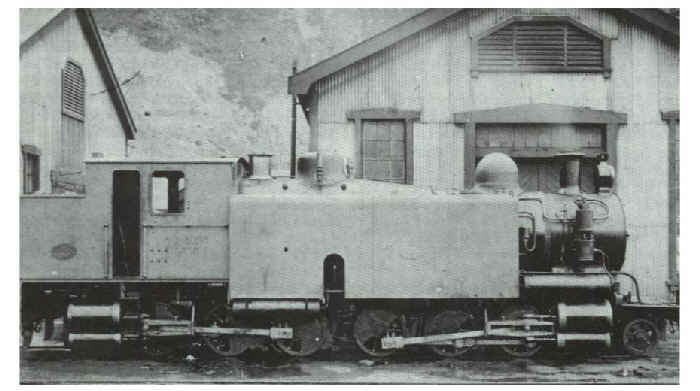Introduced: 1906
Number in Class: 1

Locomotive Specifications
|
|
| Engine Weight: 65.8 tons |
Tender Weight: | Total Weight: 65.8 tons | Adhesive Weight: 61.1 tons |
| Length over Buffers: 37' 2" |
Total Wheelbase: 27' 3" | Engine Wheelbase: 27' 3" | Coupled Wheelbase: (2) 8' 0" |
| Tender Wheelbase: | Driver Wheel Dia.: 36½" | Cylinders HP: Four - 9½" x 18" |
Cylinders LP: Four - 16" x 18" |
| Grate Area: 26.0 sq ft | Evaporative Area: 1540 sq ft |
Superheated Area: | Working Pressure: 200 psig |
| Tractive Effort: 24200 lbs f |
Coal Capacity: 3.2 tons | Oil Capacity: | Water Capacity: 1250 gals |
|
Remarks:
This locomotive was designed by the Chief Draughtsman for NZR, G.A. Pearson, to overcome difficulties with the Fell type engines used on the 1 in 15 grade of the Rimutaka incline.
He chose a Mallet type of design with 2-6-6-0 wheel arrangement, fitted with Vauclain compund cylinders. The boiler was a Vanderbuilt design with a circular firebox and there were two regulators,
one each for the leading and trailing engine units. It became known as "Pearson's Dream". The locomotive was classified and numbered as 'E' 66 and trialed between Upper Hutt and the Rimutaka Summit and readily hauled a load of forty-five vehicles. Two powerful 'Wf' tank engines would normally be required to haul a similar load. In the first year of service, 'E' 66 was shopped for heavy repairs on one occasion and for light repairs once. Poor steaming qualities became apparent early in its service but modifications to the brick arch improved this. 'E' 66 worked the Rimutaka incline until 1909 when the Government took over the Wellington & Manawatu Railway Company thus opening up the Hawkes Bay traffic connection via the Manawatu Gorge, so relieving the Rimutaka incline and the hard working Fells. 'E' 66 then spent some years in Wellington on banking engine duties for the Wellington-Johnsonville grade, for which it had not been designed. It came in for considerable criticism from its engine crews and in May 1917 it was dismantled and stored |